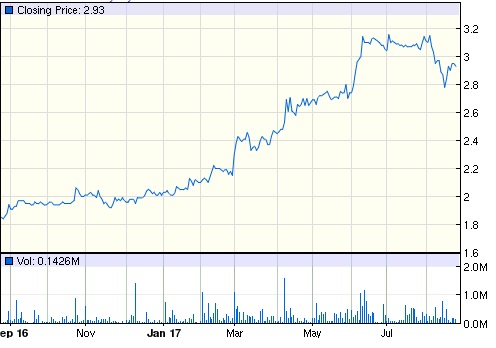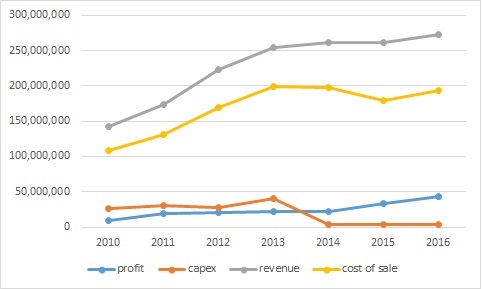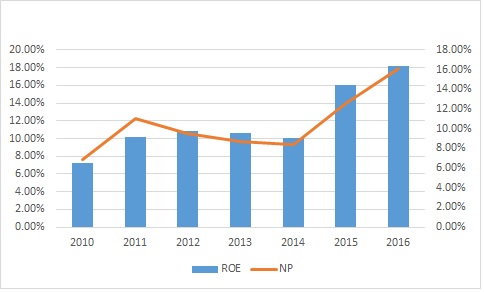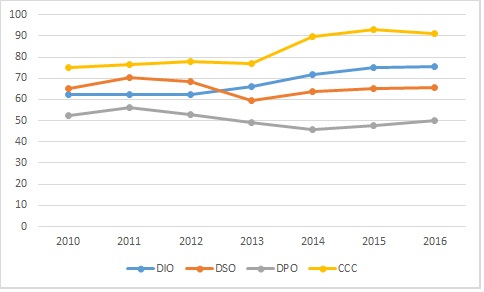Author: ajim102 | Publish date: Sat, 26 Aug 2017, 11:09 AM
Cocoaland Berhad's share
price had gone up from RM1.86 to RM2.93 in one year's time (from
23/8/16-23/8/17) a 58% increase.An excellent result for a company in
which business is manufacturing
and trading of candies, beverages and other related food stuffs. But
what drives the rise in share price of Cocoland?does it comes from the
business performance or is it just an effect from current bull market?
“Growth is never by mere chance; it is the result of forces working together.”

Lets look into the company's performance to see whether the rise in
share price is justified by the business performance or not. Figure 1
shows the trend in revenue,cost of sales,profit and capex for Cocoaland
Bhd from 2010-2017. I decided to take 2010 as the base year because in
2010, Fraser & Neave Holdings Bhd (F&N) becomes the 2nd largest
shareholder in cocoland (and still the 2nd largest shareholder as per
latest annual report)
Figure 1

We can clearly see that revenue is on an upward trend rising
exponentially from for the first 4 years and stagnate for the next 3
year but increase back in 2016.Cost of sale is rising in tandem with
revenue for the first 4 years but starts to fall afterwards. This trend
can also be seen in profit and capex, figure 2 shows a clearer picture
of the relationship between capex, profit and its free cash flow
Figure 2

We know that prior to 2013,Cocoaland Bhd had been spending a lot on
capex to expand its production line in rawang thus its free cash flow
(FCF) is in the negative territory.But since then we can see that capex
drops significantly,profit and FCF start to rise as the company's
investment starts to bear its fruit. Similar improvement can be
observed with Return on Equity (ROE) and net profit margin (NP)

Cash Conversion Cycle (CCC) is a metric used to gauge the effectiveness
of a company's management and, consequently, the overall health of that
company. The calculation measures how fast a company can convert cash
on hand into inventory and accounts payable, through sales and accounts
receivable, and then back into cash (Investopedia) , the lower the days
the better.
CCC = DIO + DSO - DPO
Days Inventory Outstanding (DIO) refers to the number of days it takes
to sell an entire inventory. A smaller DIO is preferred. Days Sales
Outstanding (DSO) refers to the number of days needed to collect on
sales, or accounts receivable. A smaller DSO is also preferred. Days
Payable Outstanding (DPO) refers to the company's payment of its own
bills, or accounts payable. By maximizing this number, the company holds
onto cash longer, increasing its investment potential. Thus, a longer
DPO is preferred (Investopedia)
I know we are supposed to look at a company's CCC in comparison with
its peer but lets look at the trend over the years as shown below.

Cocoaland Bhd's CCC has been increasing from 80 days prior 2013 to 90
days. Is it a bad omen for Cocoaland Bhd? A sign of dark days ahead? Not
so fast folks, it is normal for a company to extend credit to their
customer especially during its expansion/growth phase, the percentage of
impairment of account receivable is very low with an average of 6% for
the past 7 years.It shows that the management is very cautious in
extending credit term to its customer. The increase in ROE, Net profit
and FCF further justify the increase of Cash Conversion Cycle.

| Geographical segments | |
| Malaysia | 44% |
| Eastern Asia | 27% |
| South East Asia | 15% |
| Middle East | 11% |
| Others | 3% |
| 100% |
Back in 2010, Cocoaland's revenue comes only from Malaysia and China
but had since then diversify its revenue steam from various region and
is planning to penetrate more market in coming years. This shows that
the management is hard at work in expanding the business to capture more
market overseas,this shows tht cocoaland is a good consumer stock with
worldwide presence

Leverage Success Sdn Bhd a company controlled by the company's director
which in turns control 38.04% of Cocoaland Berhad and Frazer &
Neave Holding Bhd. controls 27.19, this shows that the management holds
substantial interest in the company and with F&N as second largest
shareholder it will definitely brings strategic synergy to Cocoaland
because F&N being in the consumer industry itself will not simply
invest its money for the sake of capital appreciation or dividend
income.The effect of this synergy can been seen in the development and
improvement of Cocoaland's business over the years
From my opinion the appreciation in Cocoaland Bhd's share price is
justified by the business performance and furthermore current
utilization rate is only at 55% and the company is planning to boost it
to 80% in the next 3 years,there is a lot of room for growth which is
what we want to see in a growth stock, the ability to generate more
revenue.
Beside growth,the company had been paying dividen constantly with an
average of 50% payout ratio and average dividend yield of 4% while
maintaining clean balance sheet (net cash) and healthy cash flows. This
is a hallmark of a good management team.
Action speaks louder than word.Refer back to figure 2 (Profit vs Capex
vs FCF) and you will understand the quality of the company. Revenue,
profit and FCF is picking up, cost of sales is going down despite high
volatility in its raw material price,high CAPEX spending is over and now
its time to focus on growing the company forward.
ROE is at 19%,ROIC at 20%,Net profit margin 16%, FCF yield 5%, 30sen
cash per share (net cash position) Cocoaland Bhd is on its way toward a
steady and consistent growth. Cocoland is suitable for investor with a
long term horizon (more than 1 year) not for those who seek instant
gratification on their stock picks.
Disclaimer : This article is only for sharing purpose but any feedback is most welcome
For further reading i strongly suggest looking at Donkey Stock earlier post
https://klse.i3investor.com/blogs/donkeystocks/113053.jsp
And recent news for Cocoaland Berhad:
http://www.theedgemarkets.com/article/cocoaland-focus-more-overseas-markets
http://www.theedgemarkets.com/article/cocoaland-focus-more-overseas-markets
http://klse.i3investor.com/blogs/antifragileinvesting/130938.jsp
